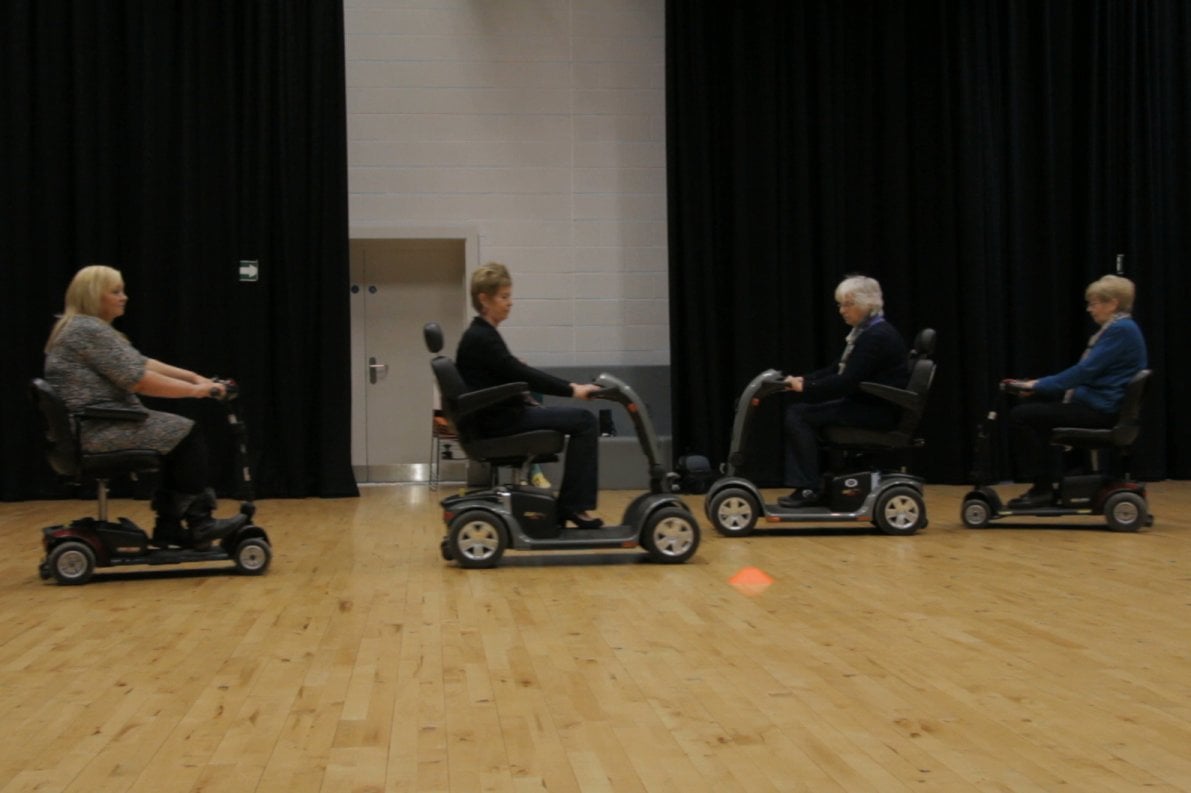
Senior performers rehearse a synchronised mobility scooter dance
The subtle art of community engagement
Working in local authority arts development was where Martin Cox learned to listen, understand and value people as much as he valued artistic outcomes. He shares his views on audience development.
After working as a pie poker, burger flipper, salad bar refresher, shed dipper, teacher and small-time music impresario, I ‘cut my teeth’ as a council arts officer in one of the least glamorous, most socially deprived boroughs in the UK. 15 years on and hundreds of projects later, I arrived at my current role as a creative producer on a Creative People and Places (CPP) project.
I find the aim of CPP is basically the same as council arts development: to equitably bring communities together around transformative cultural activity. For CPP the primary objective is to build audiences and infrastructure, and for the council it was to improve life chances and wellbeing.
I wasn’t convinced that the people drifting by would immediately reassess the value of the arts in their lives and dash off to buy theatre tickets
Was it just me? Working in the council I felt my work was undervalued by both the proper arts world and my own employers. I felt that the proper arts world perceived council arts development as being distracted by local issues, low status and like a dad at the disco – not rock n’ roll.
Within the local authority arts development was valued like figurines on top of a wedding cake – decoration. A nice extra, but not going to get the bins collected. Artistic quality? That’s ‘artsy fartsy’ talk and it cut no ice with councillors or executive staff. I was routinely reminded that I worked for the taxpayer. There was the endless bureaucracy, justifying every half penny spent; procedures and at times the target tyranny were paralysing. There’s no doubt about it that working for a council was tough. I was glad to move on.
Building audiences
CPP is a breath of fresh air. Artistic quality is not a dirty word. My work is valued. I don’t have to sneak slices of artistic quality between socially mobile wellbeing buns. There is excitement, ambition and freedom to think big and reach for the best.
However, allowing for the fact that CPP is an ‘action learning’ project, there is a danger that we miss opportunities to bring new audiences into our galleries, theatres and creative spaces. That we slip into drive-by, ad-hoc engagement that fails to connect with people.
In terms of audience development, I actually did some of my most creative and successful work as a council arts officer. The council had clarity. Everything had to be justified by its social benefit: How will this benefit people living here? There was purpose and parameters in which to develop ideas. I learned to listen, to understand and value people as much as I valued artistic outcomes – to focus my creative ambitions on the needs, themes, hooks and stories presented by the people and narratives of the neighbourhoods I worked in. In short, it was about them.
A sense of purpose
Translated to CPP, this approach aligns well and has been very effective. But while CPP offers the opportunity to think big, we must be cautious not to lose sight of purpose. I remember being asked by a man at an impressive outdoor performance event: “Why are we having this when everything is closing?” The truth is, on that occasion I myself struggled to see the benefit. I wasn’t convinced that the people drifting by would immediately reassess the value of the arts in their lives and dash off to buy theatre tickets.
I get it. Why shouldn’t the people of ‘Anytown-on-here’ get the highest quality art in the world? But I think audience development is about connecting with people and beating new pathways together. I have seen the allure of the international artist trump the opportunity to strategically connect people at a local level to create communities where more people have the opportunity to talk about my mate the artist. I reckon a compromise on artistic quality (whatever that is) is worth it when it is a stepping stone for new audiences and contributes to a sustainable cultural infrastructure.
When it comes to building audiences, with freedom comes responsibility. Perhaps there is something to be said for small-time thinking and keeping parochial social need in the equation. Council’s localism, bean counting and a laissez-faire attitude towards the arts provided me with freedom to experiment and pushed me to finding ways of connecting directly with people to initiate meaningful arts activities to build audiences locally.
Relationships could be developed over longer timeframes and the artistic outcomes were rooted in stories relevant to the communities in which it was presented. I can’t imagine a better training in the subtle art of community engagement, or to put it another way, audience development.
Learning self-control
I’m fortunate to be part of CPP and to be given the opportunity to bring quality arts and social practice together. I see great, innovative projects across the programme. But with just three years to achieve our aims, I am grateful for my grounding in the local authority, to have had the opportunity to learn self-control and develop the skills to build relationships with communities and audiences. I’m not sure CPP could have wrangled the narcissistic art graduate in me as effectively as the council did.
Martin Cox is Creative Producer at Creative Black Country.
www.creativeblackcountry.co.uk
Join the Discussion
You must be logged in to post a comment.